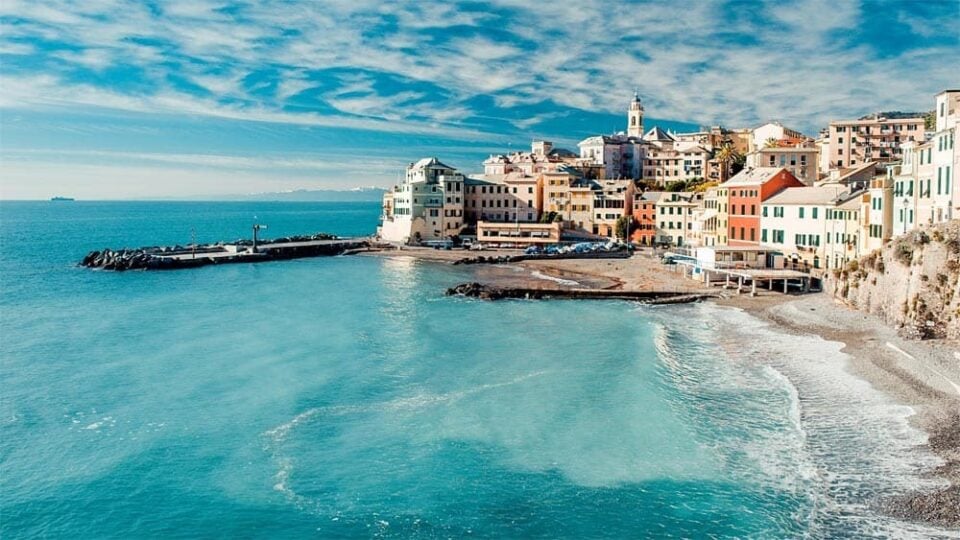The legendary and mythic island of Corfu is located in the northernmost part of the Greek coastline and is bathed by the gentle waves of the Ionian Sea. Greeks call Corfu the “unexpected” island among its six siblings. Mountains, valleys, forests, a whimsical coastline, and winding serpentine roads make travel long, mysterious, and romantic.
The island provokes travelers to deviate from the main road, and doing so will instantly place them in the most secluded corners. In the distant Middle Ages, it was believed that the island’s name related to the word “korypho,” meaning “peak,” but this is not its only name.
The Greeks themselves prefer the name “Kerkyra,” after the mythological nymph beloved by Poseidon. This is also the name of the island’s capital, a magical, unique town.
Kerkyra or Corfu Town
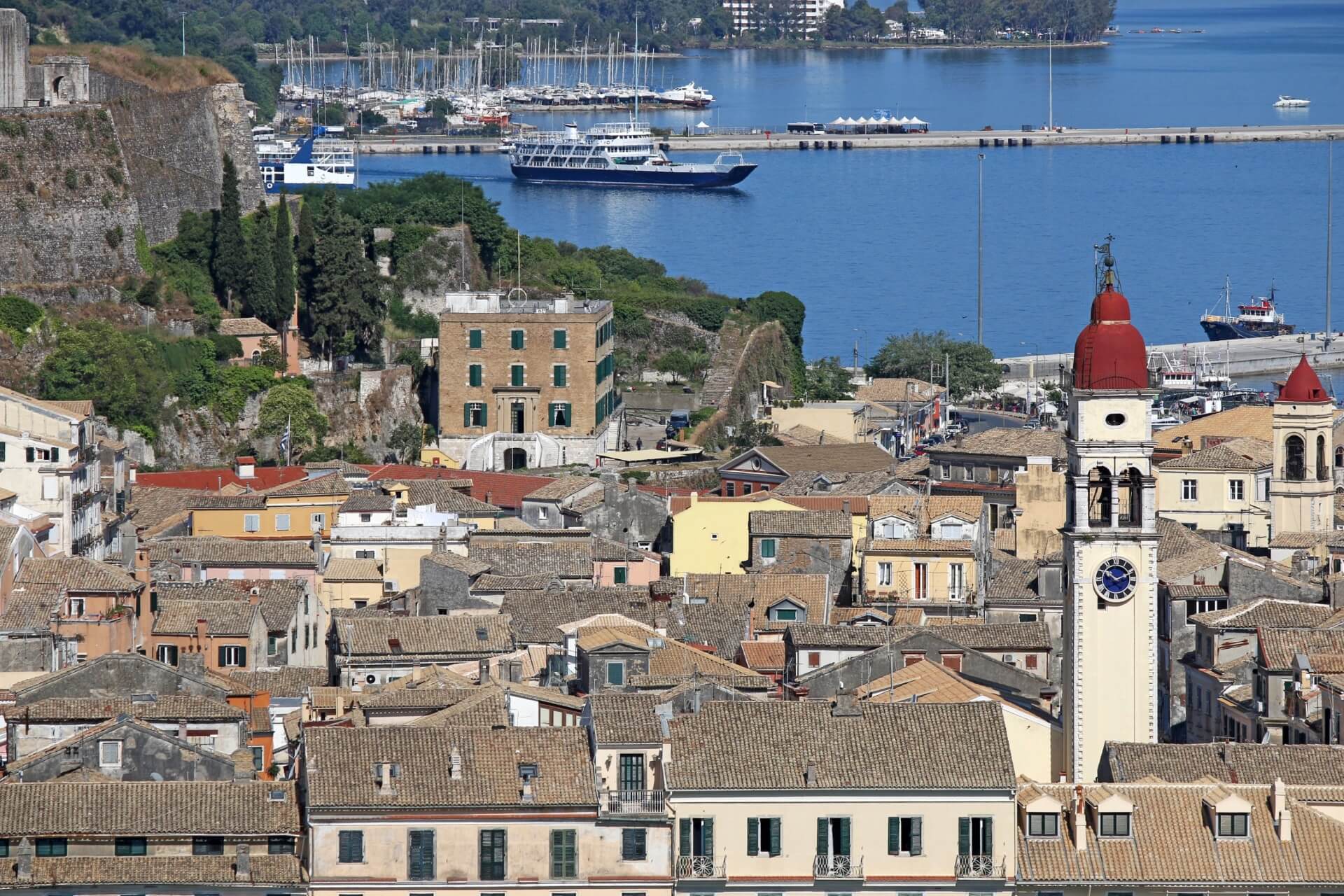
Upon arriving on the island by plane or ferry from the mainland, tourists first strive to visit Kerkyra or Corfu Town. For centuries, Corfu was a coveted place for Venetians, Englishmen, Romans, and Frenchmen. Therefore, the city’s appearance absorbed influences from various cultures, and many architectural masterpieces have been preserved to this day. Those who have been to Italy or at least seen photos of Italian cities will immediately notice the resemblance of Kerkyra’s architecture to Venetian style.
But the true feeling tourists get is a magical symbiosis: it seems like you are simultaneously in England, Italy, Greece, and France. For many centuries, the city was torn between the influences of these countries, and each ruler sought to leave their mark here. An interesting fact is that Corfu Town has an entire street that is an exact copy of the French Rue de Rivoli.
The image of Corfu Town and its lifestyle is the result of the island’s rich history and its interaction with European cultures. It is not easy to describe the city in a few phrases. The architecture is European, including English palaces and Venetian houses, monasteries, and churches. The greenery of parks, thousands of olive trees, and the transparent air enveloping the streets fill the city with colors and freshness.
The people are very friendly and hospitable, religious, and musical. Festivals with huge crowds and brass bands. Kerkyra is a celebration of joy and prosperity, attracting art lovers from all over the world to its cultural events: philharmonic concerts, local artists’ exhibitions “Artistic Autumn,” and the Kerkyra Carnival – a twin of the Venetian “Carnival of Masks.”
A special place among Kerkyra’s cultural events is the celebration of Easter. For these three Easter days, all of mainland Greece strives to get to Corfu. Hotels are booked a year in advance, with 70,000 visitors for 130,000 locals. This is because only on this Greek island is Easter celebrated as it was centuries ago.
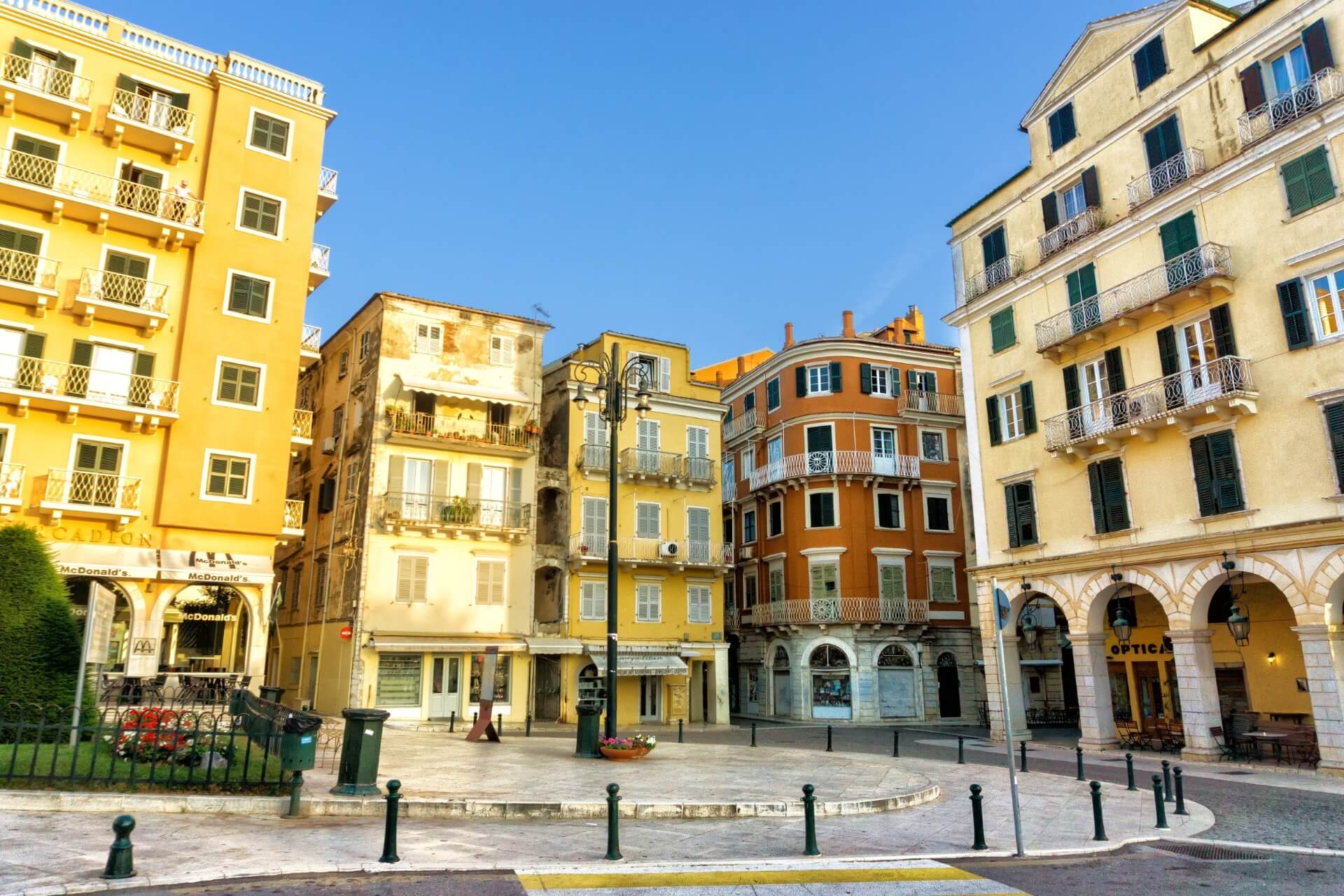
Only here has not a single tradition of the three Easter days been lost, starting from Good Friday and ending with Easter Sunday. Nowhere else do the walls of the church begin to “shake” early in the morning on Saturday, symbolizing an earthquake. Nowhere else at exactly 11 AM do pots of water fly out of house windows.
And nowhere else does the entire island, from young to old, participate in all the Easter events, with 15 brass bands taking part in processions. At 9 PM, when the ceremony of lighting the holy fire in the Church of Saint Paraskeva takes place, it is brought out to the square, where the Easter liturgy continues in a gazebo.
At midnight, the great bell rings and the Big Cross is lit. A colorful firework display, the most impressive in all of Greece, is held over the old fortress. On Easter Sunday, a traditional lunch with roast lamb and other simple human joys takes place. Such a unique and eventful Easter cannot be seen anywhere else.
Most people associate Greece with antiquity. This means the gods of Olympus, marble statues, ruins of theaters, and temples. But for Russians, especially the faithful, it is important that Orthodoxy was born and established on Greek soil. There are countless Orthodox churches in Greece. They are everywhere, an integral part of the Greek landscape. Greeks bless marriages in them and come for traditional religious rites.
Church of Saint Spyridon
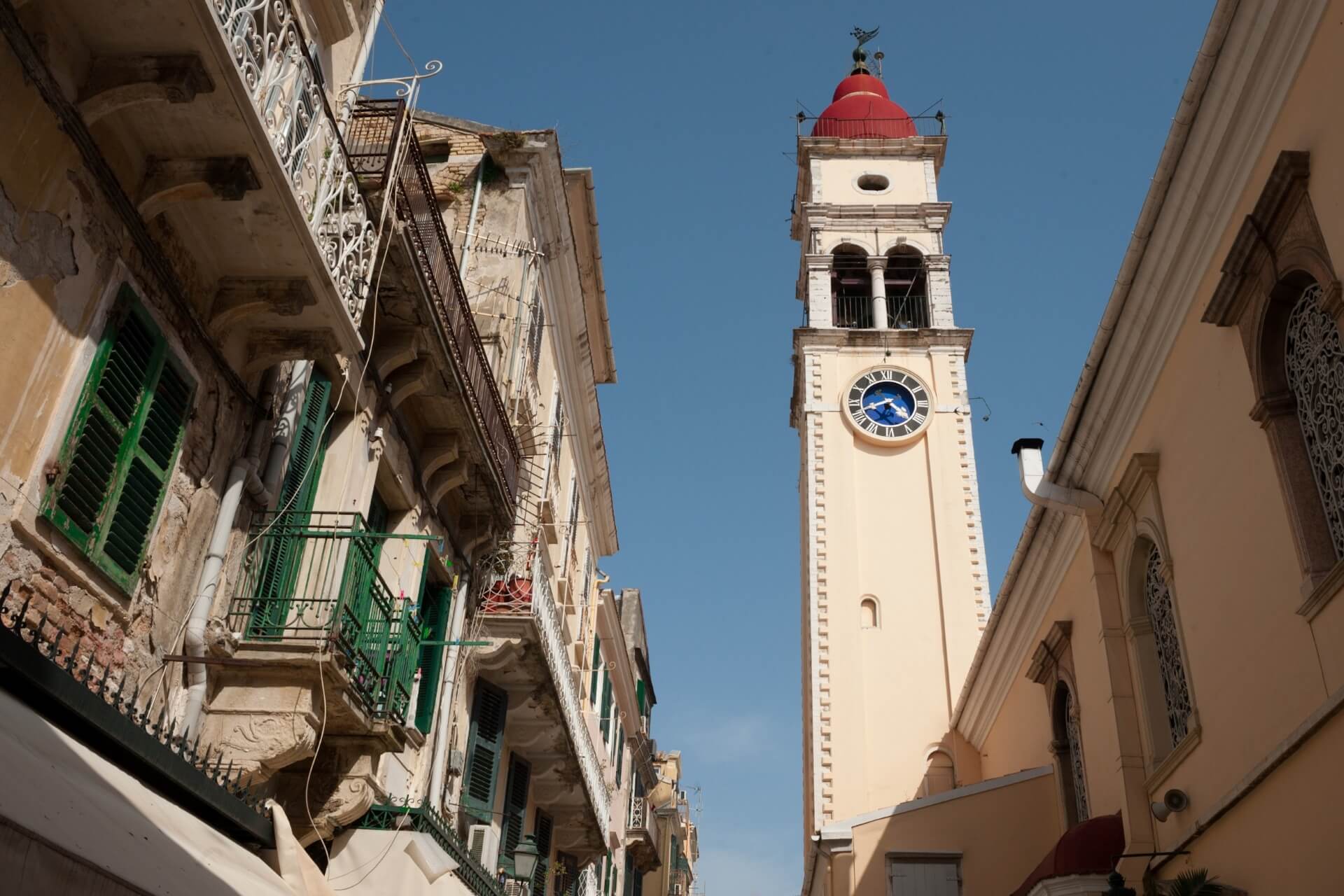
A special place in the hearts of Greeks, especially the residents of Corfu, is held by the island’s patron Saint Spyridon. The modest exterior of the church named after this saint hides in the web of narrow medieval streets of the city, but everyone knows the way to it.
Pilgrims from all over the world strive to reach the incorruptible relics of Saint Spyridon. Legends of healing miracles and help to people still intrigue many scientists. Exactly a week before Easter, the island solemnly celebrates the Day of Saint Spyridon, and this holiday, in its breadth and warmth, is in no way inferior to the scale of Easter celebrations.
Achilleion Palace
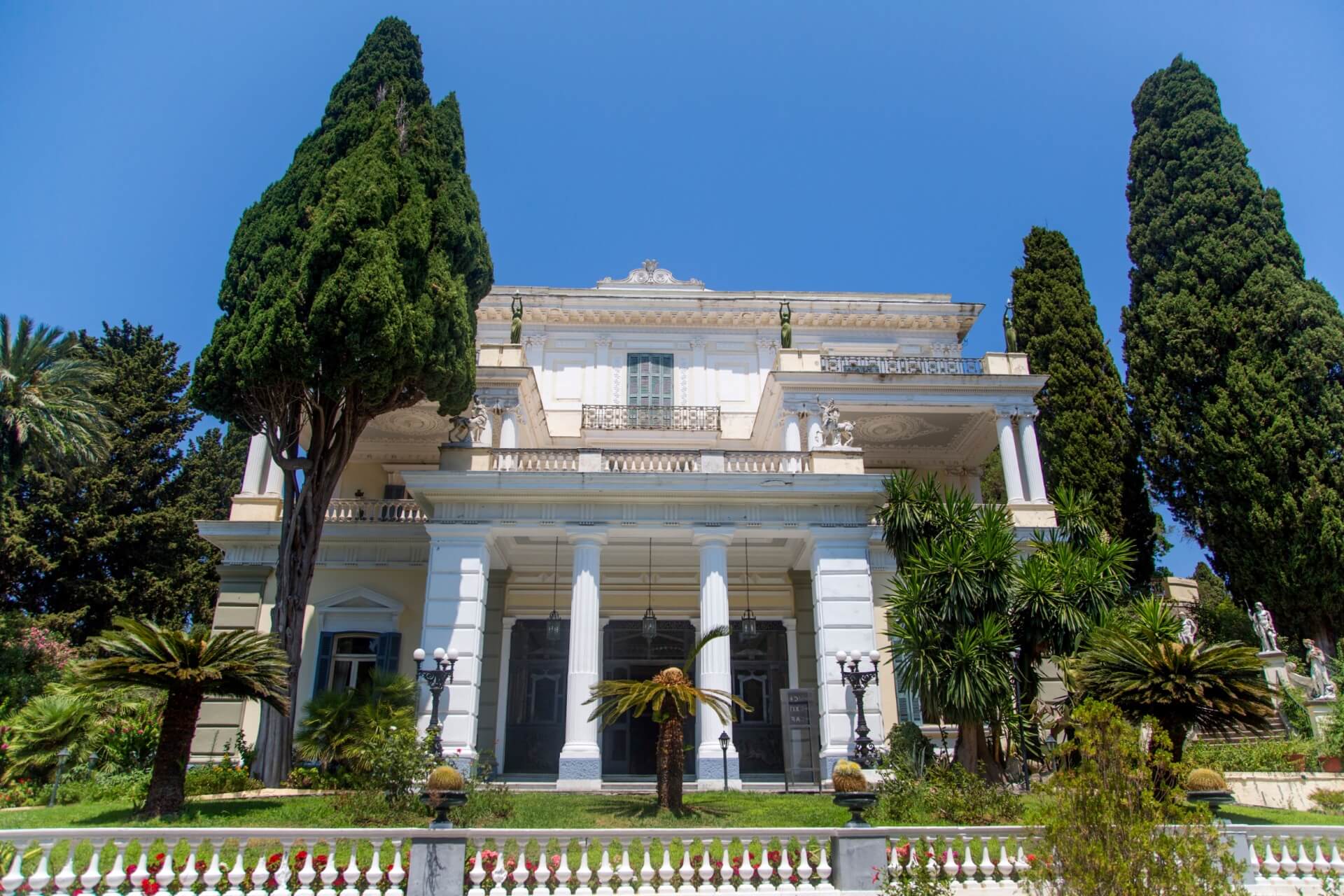
Another iconic place is the Achilleion Palace. It was built by Elisabeth of Austria, better known in Greece as Empress Sisi. During her long travels through Europe in the late 19th century, she visited Corfu. She felt that it was here she could find peace of mind. Sisi decided to dedicate the palace she built to her favorite hero, Achilles. Thus, Achilleion came into being.
She designed every corner of the palace and park herself. Inside the palace, there was not even a hint of pomp and luxury. It was more like a house built with great love and taste than an imperial palace. The exterior and interior of the palace were later altered by its next owner, Kaiser Wilhelm II of Germany. Despite the changes, it has not lost its appeal and remains one of Corfu’s calling cards.
Mount Pantokrator
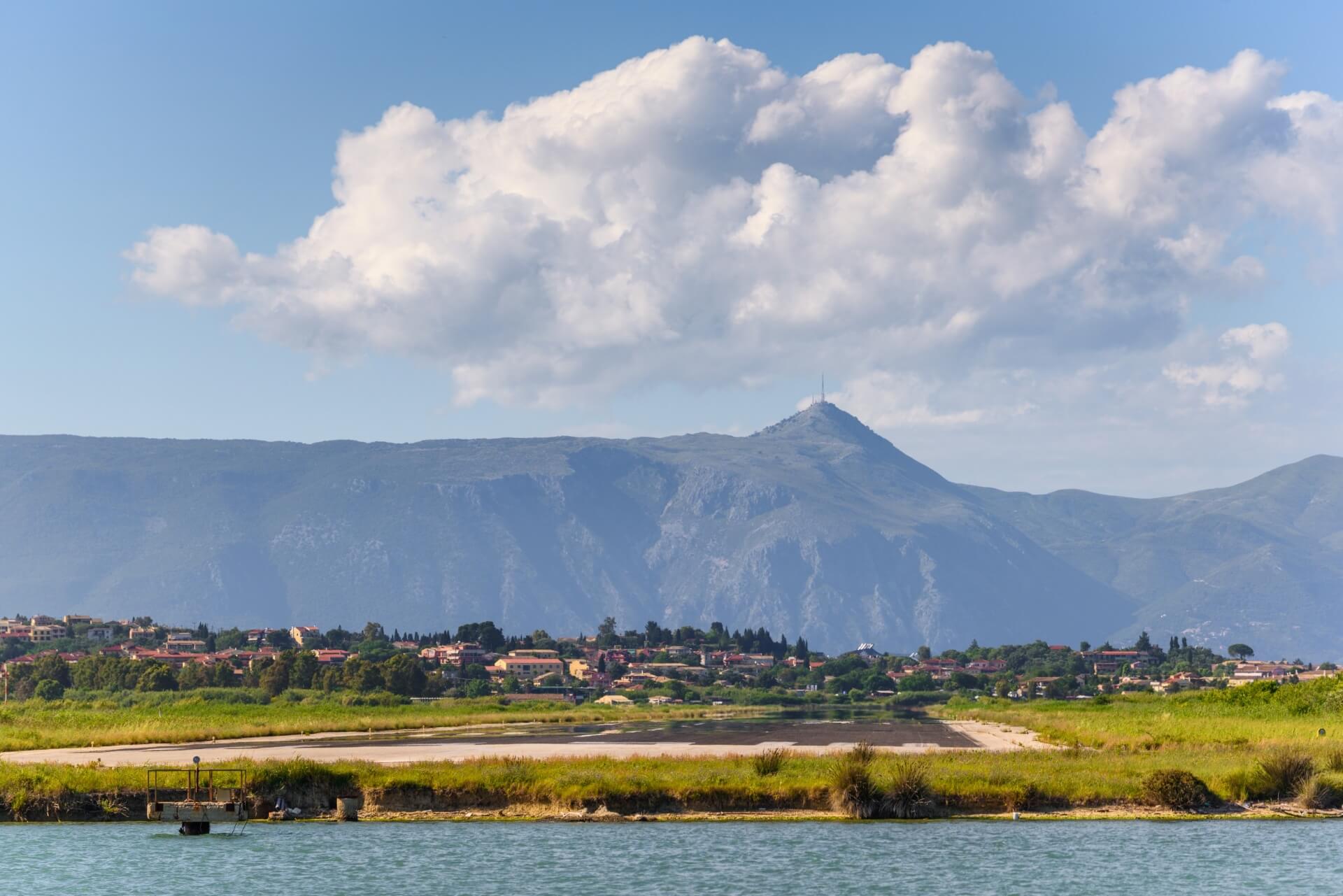
In the northeast, above the entire island, rises Mount Pantokrator. Magnificent views of the island open up to those who climb the winding mountain serpentine to the summit. In clear, cloudless weather, you can see the outlines of Italy and neighboring Albania from these heights. It is not surprising for such a religious country that a church of the Transfiguration of the Lord, built in the 7th century on the site of a destroyed ancient monastery, stands at the top of the mountain.
The magic of the natural landscapes has given rise to another common name for this place – “the island of returns.” It is the desire to once again enjoy the beauty and natural surprises of the coastline that draws tourists to come back.
Paleokastritsa
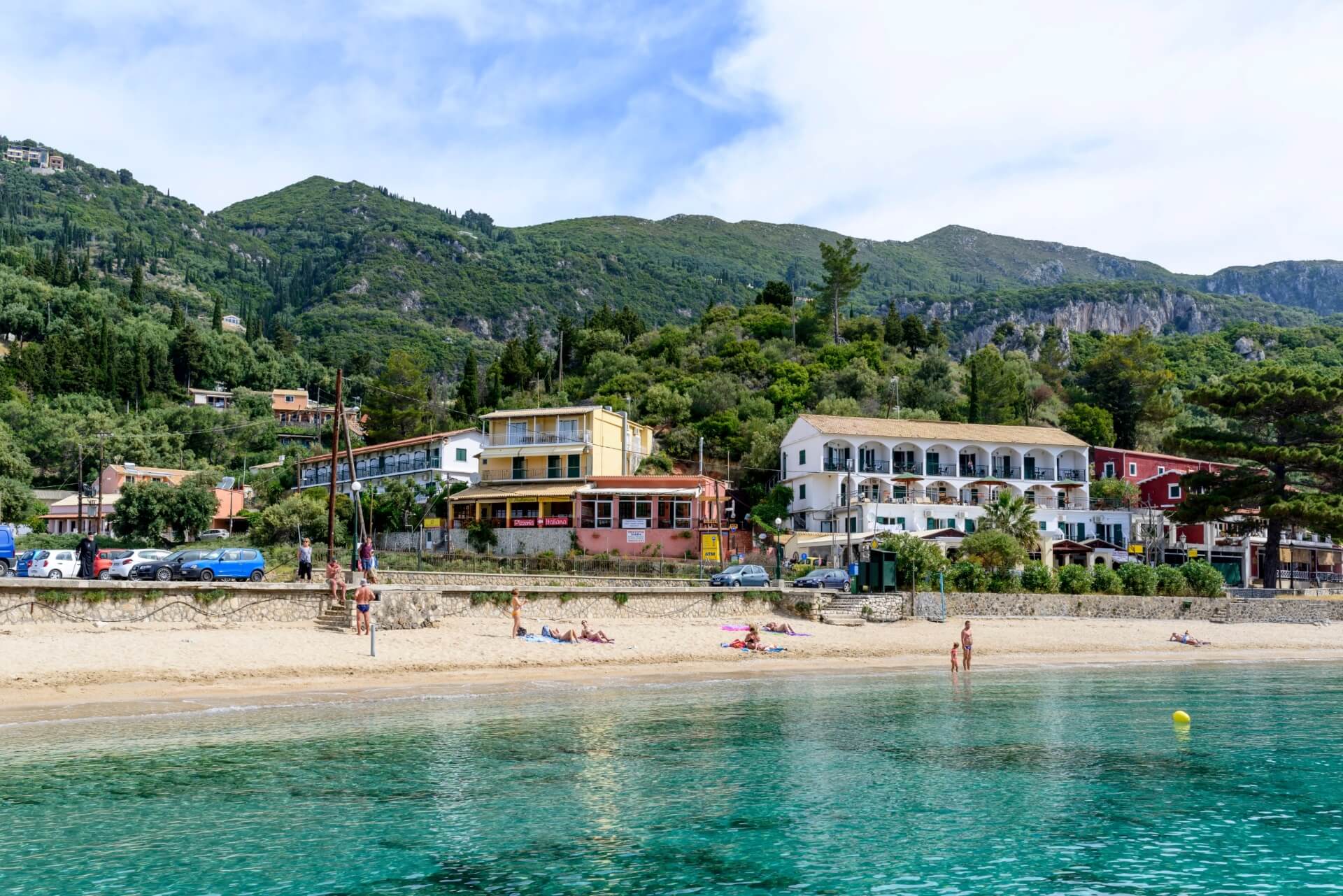
The most beautiful and attractive landscape on the island, according to the Greeks themselves, is Paleokastritsa. The waves of the Adriatic Sea have worked to create numerous grottos and caves, hidden secluded beaches, and sheer cliffs that look utterly unapproachable. The history of this place is rich with events, as it always stood in the path of those seeking quick profit.
That is why all the local villages climbed into the mountains. Defending from invaders and pirates was easier from high, inaccessible places. Even the Orthodox church of the male monastery “Theotokos” is well “disguised,” although it stands on the highest cape. The military history is in the past, and today Paleokastritsa is home to hotels with stunning views, beaches, and marinas for pleasure yachts.
Corfu Marina
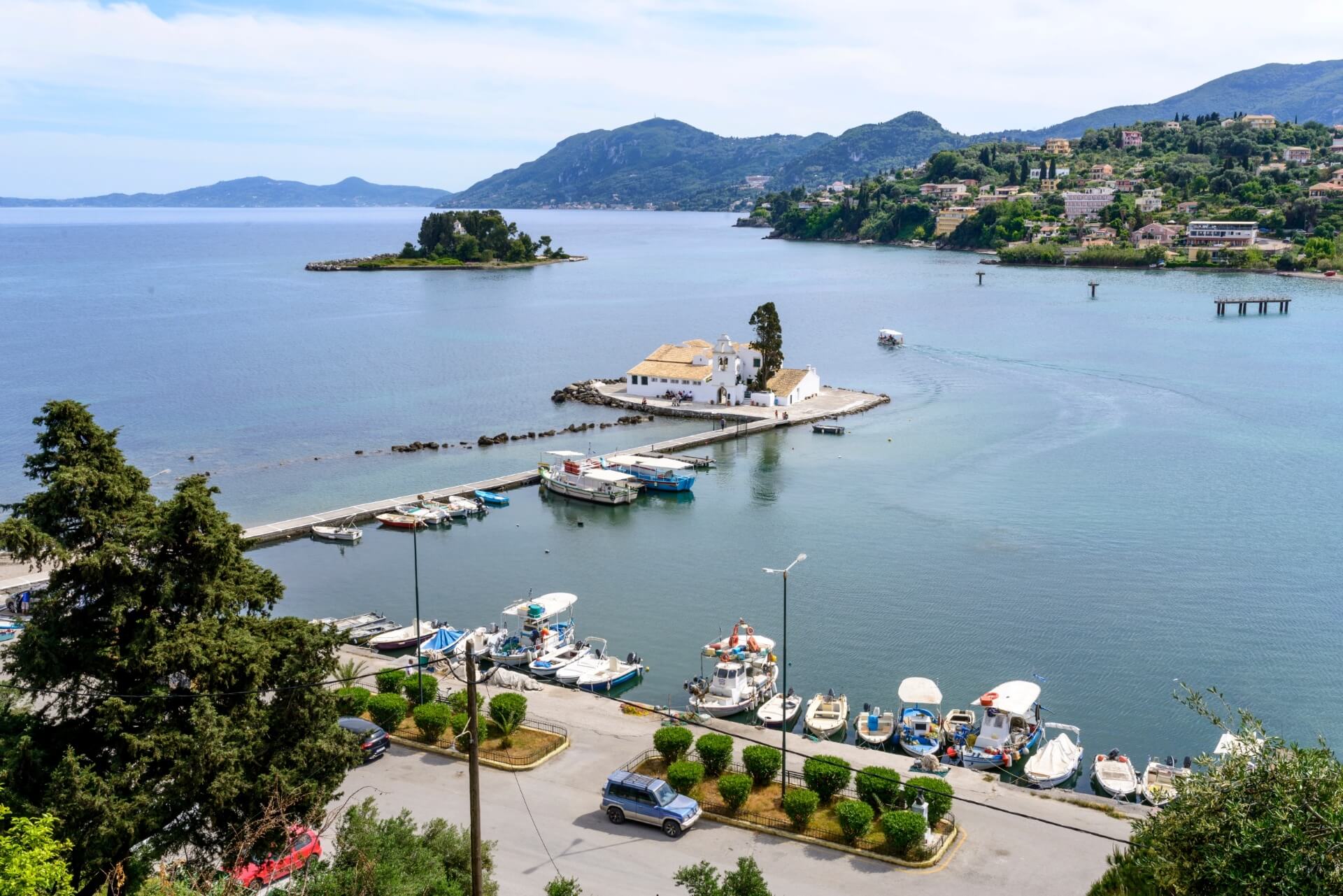
Corfu Marina is where yachts dock. It is here that it becomes especially evident that yachting as a form of leisure is becoming very popular. Trips on pleasure boats allow tourists to visit several more attractions on the island.
Palaio Frourio
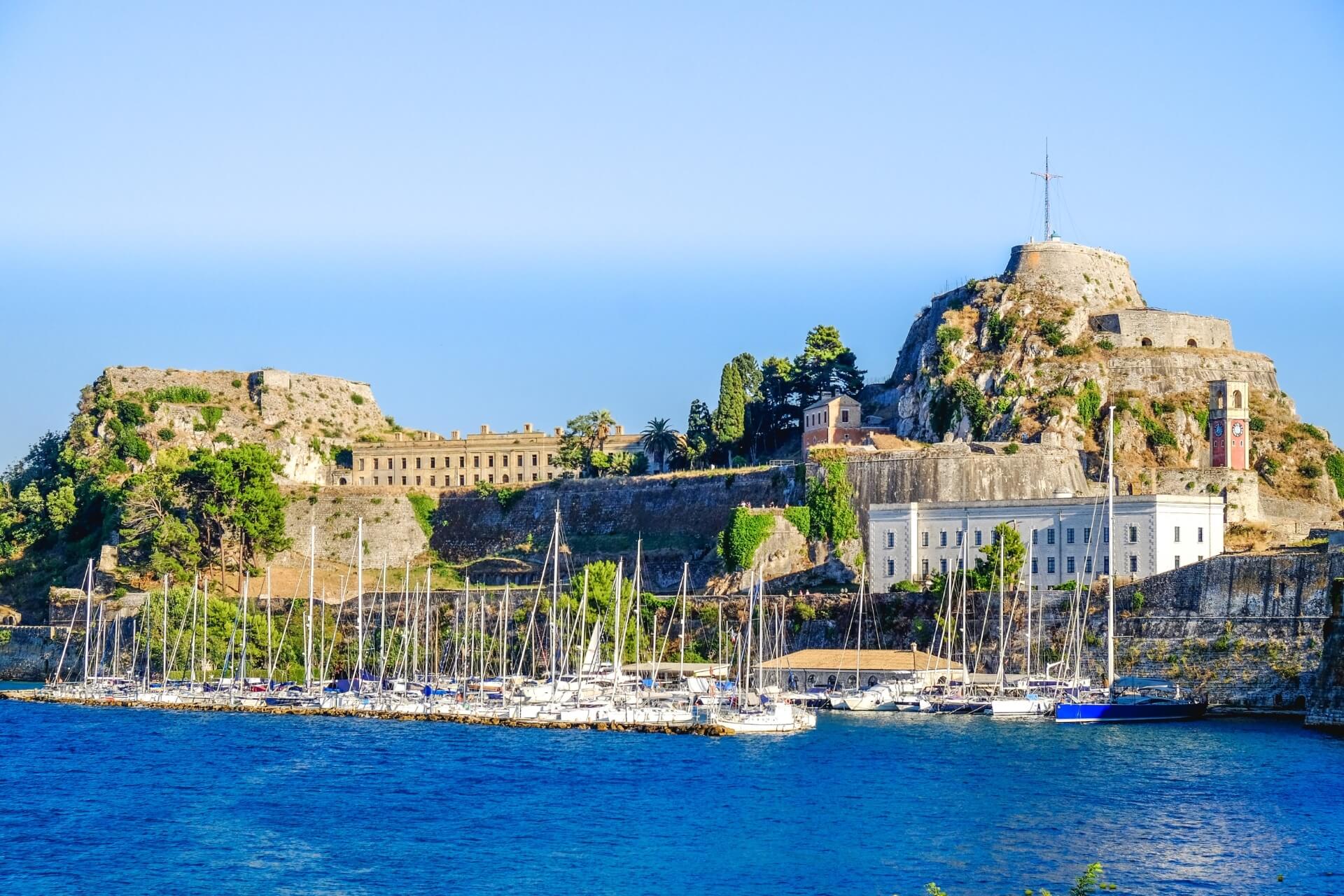
On an artificial island, separated from Kerkyra by a canal, stands Palaio Frourio – one of the oldest fortresses. Its construction began in the 7th century, during the period when the city’s fortifications were built by the Byzantines. It was expanded during the raids of the brutal Ottomans, and at that time, the canal became a defensive moat.
Later, its fortification appearance was altered by the English, who added new bastions and built the Church of St. George, distinct in decor from Greek Orthodox churches. Today, Palaio Frourio is a venue for various celebrations, concerts, reconstructions of military battles, and festivals of traditional Greek dances.
Mouse Island
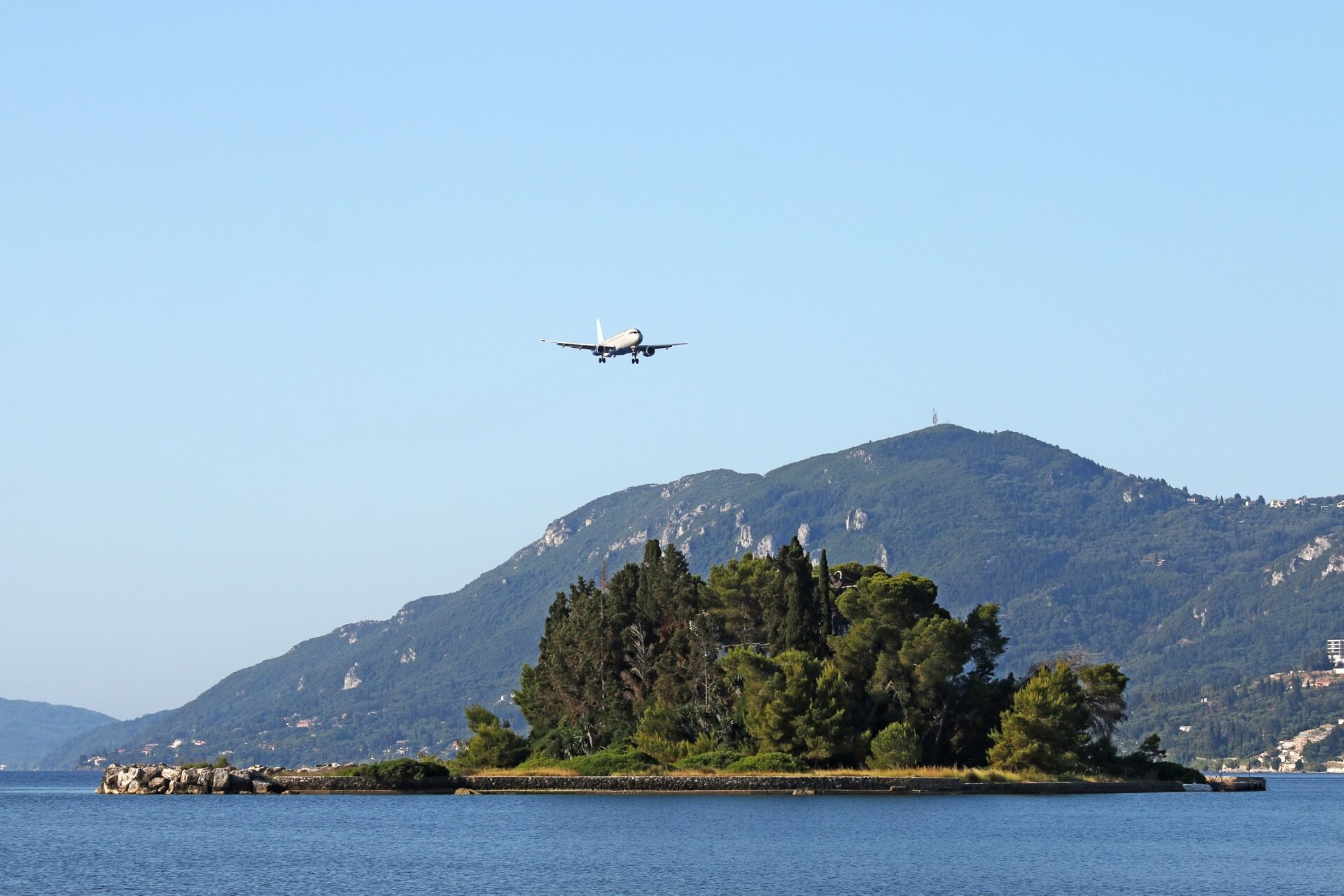
A few kilometers from Kerkyra is a notable small island called “Mouse Island.” A narrow rocky causeway leading to the Vlacherna Monastery is reminiscent of a mouse tail in shape. The monastery complex takes up almost the entire island, with the central place given to the chapel and the white church of the Virgin Mary.
For photography enthusiasts, this place is a must-visit. From any angle, you will get a unique shot. No wonder the image of Mouse Island graces every tourist brochure and is featured in all souvenir products. A trip to Greece, the land of antiquity, will undoubtedly leave many bright impressions, but Corfu – it’s a different Greece, and it’s no wonder the locals will never say they are Greeks. They are Kerkyrians!
Theotokos Monastery in Paleokastritsa

In one of the most picturesque areas, the gem of the island – Paleokastritsa – famous for its beautiful natural landscapes, stands the male monastery of the Virgin Mary or Theotokos (in Greek). This beautifully maintained monastery of hardworking monks is a true monument of antiquity. It was erected in 1225 on the ruins of an ancient fortress and completed in the 17th century, representing a unique example of mixed architectural styles.
Everything here speaks of the monks’ careful love for their monastery: the immaculate cleanliness of the courtyard, the beautiful flowers, the well-kept garden, and the vineyard. A wonderful arched courtyard, decorated with climbing bougainvillea and mosaic panels, leads to the monastic cells. The monastery has a small olive oil factory, where visitors can buy oil at a low price.
The monks are engaged in winemaking, keep animals, bake bread, and grow vegetables, fully providing for themselves. The fruits of their labor are sold on-site (their purchase by pilgrims is a kind of donation for the monastery’s upkeep). The monastery courtyard is home to many varied cats.
The indescribably beautiful landscapes surrounding the monastery enhance its wonderful appearance. The impression is heightened by the sight of the church located at the highest point of the mountain. It houses miraculous icons of the Assumption of the Virgin Mary, the “Life-Giving Spring,” and “Skopietissa,” which thousands of pilgrims come to pray before.
The church’s interiors are decorated in Venetian style: the ceilings are painted with uranias – imitations of paintings in ornate frames (they look very beautiful!). There is a small museum in the monastery, where the exhibits are Byzantine and post-Byzantine icons, presenting a very interesting spectacle.
The monastery has a magical well that grants wishes, so everyone tries to perform the wish-making ritual. To do this, you need to stand with your back to the well, make a cherished wish, and throw a coin, trying to hit it so that the wish comes true. You can make several attempts, making a new wish each time. For Russians, there is a special object to see here – Admiral Ushakov’s cannon, left after military campaigns.
Kanoni Village – A Corner of Enchantment
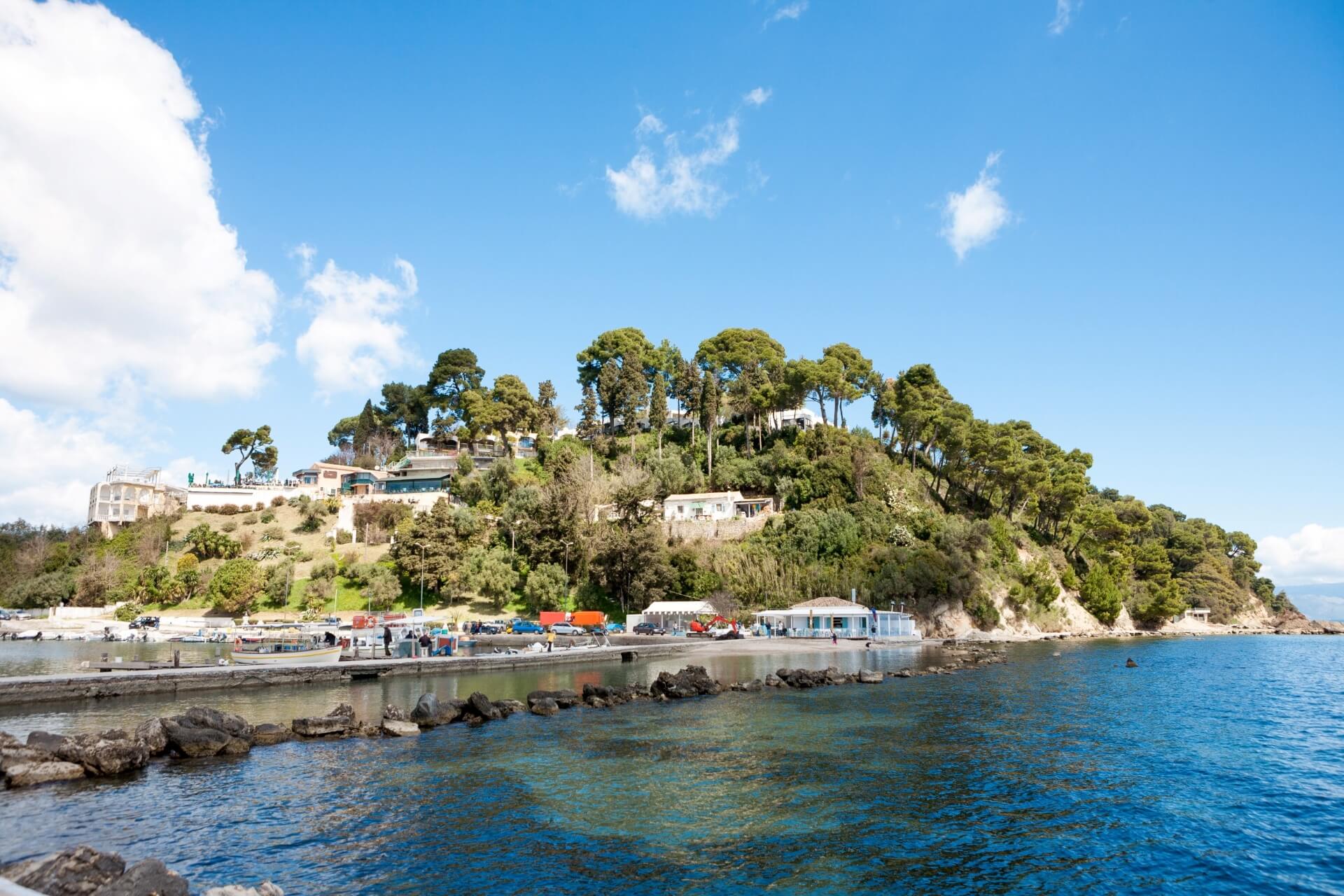
The surprisingly beautiful village is located in the southern part of Corfu’s capital – Kerkyra. Essentially, this is a small peninsula washed by the waters of the Ionian Sea, with wonderful beaches, charming landscapes, cozy houses, and a magnificent hotel. From the village, there are stunning views of the medieval Vlacherna Monastery, located on a small island.
The entire island of Pontikonisi, surrounded by greenery, is very picturesque, with a Byzantine church (11-12 centuries) located on it. There is a legend about the island’s origin, stating that it was formed from the petrified ship of Odysseus and resembles a giant frozen mouse. (Hence the name, which translates to “Mouse Island”).
A beautiful sight is presented by the Chalikiopoulou Lagoon, where exotic migratory birds nest. It is worth coming here specifically to see how divine everything looks at sunset!
What to See in Corfu by Car: 20 Most Interesting Places
Panagia Spiliotissa Cathedral
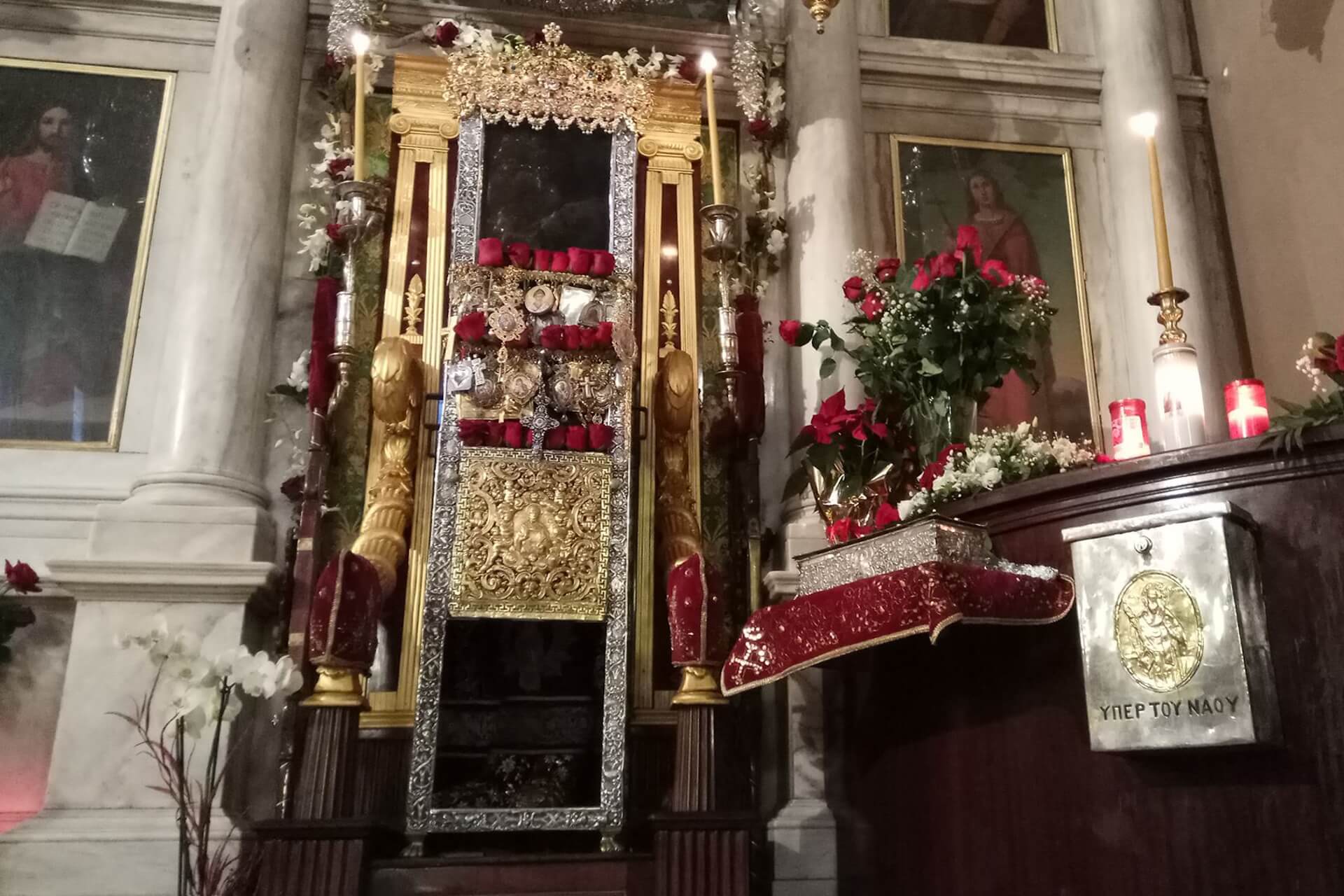
There is a very interesting attraction dedicated to Saint Theodora, a blessed Christian woman highly revered in Greece. The saint’s relics are kept in a silver tomb in front of the altar. Here also lies the reliquary with the holy relics of Saint Spyridon – the patron of Kerkyra.
The cathedral was built in 1577 as a standard church, but after reconstruction, which significantly changed its architectural appearance, it became the central cathedral of Kerkyra, with a rich collection of magnificent icons. The exterior of the church looks very noble and elegant: terracotta-colored walls are decorated with white stucco ornaments, a cross rises above the pediment. The elegant bell tower, topped with an original dome, houses a clock.
The central hall of the cathedral is exceptionally beautiful, with an openwork altar screen, numerous elegant silver lamps, a magnificent chandelier, and a mosaic floor. All the decor testifies to the high taste of the designers. Hundreds of parishioners come here to admire the interiors and pray before the holy relics.
Spianada Square
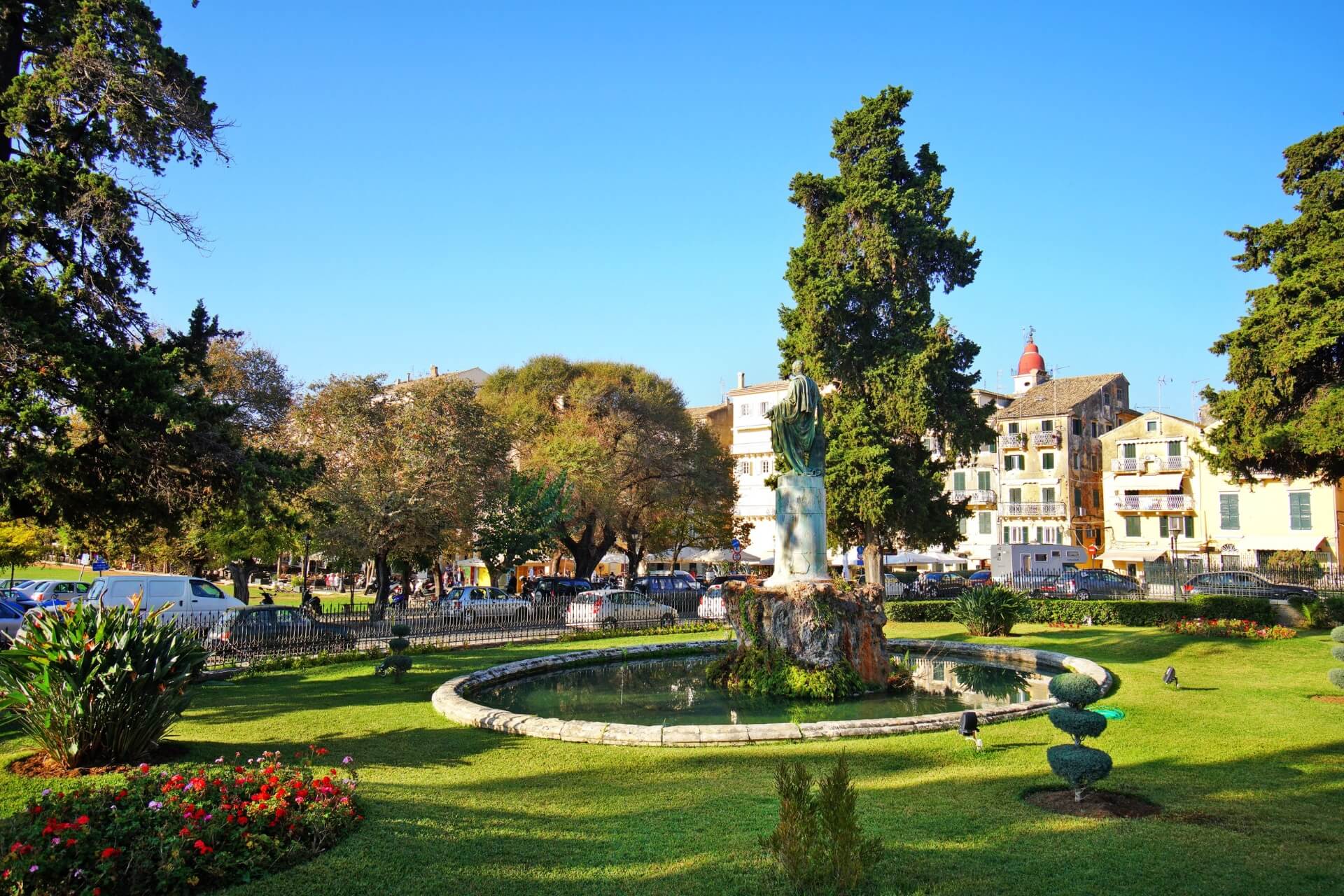
In the namesake city of the island, its center is home to Greece’s largest square, laid out in the 19th century next to the ancient Venetian fortress, which itself is an interesting attraction. Spianada Square is a territory of picturesque greenery of trees and beautifully trimmed shrubs, unique landmarks, and a favorite place for both locals and tourists.
The square is divided by a street into two halves: Ano Platia and Kato Platia (Upper and Lower Squares). The Maitland Rotunda, a pavilion built in the Romanesque style in memory of British officer Thomas Maitland, is of great interest to tourists. The intricate metal fence, the delicate pattern of the dome’s framing, and the thin pillar-columns of the rotunda evoke admiration from viewers.
The majestic Palace of Saints Michael and George, built from Maltese stone, is a true architectural gem of the square. The building’s classical style, long colonnade, and arched vaults of the side wings create a harmonious picture. In the center of the palace square’s fountain stands a monument to Frederick Adam, the governor of the Ionian Islands, who became a national hero at the Battle of Waterloo.
The monument’s base is a huge stone, reminiscent of a rock overgrown with ivy, creating a patriarchal backdrop for the entire structure. There is also a bronze statue of Ioannis Kapodistrias, a native of Corfu and former president of Greece. Luxuriously decorated Music Pavilion hosts concerts by the Philharmonic Orchestra.
The Asian Museum, with its exhibitions of various masks, diverse dishes, samurai armor, and various types of oriental weapons, will not leave anyone indifferent. In one of the square’s cozy corners, under the shade of a century-old tree, stands a modest bust of the famous author of animal books, Gerald Durrell, whose nose is polished to a shine by passersby.
“Canal D’Amour” in Sidari
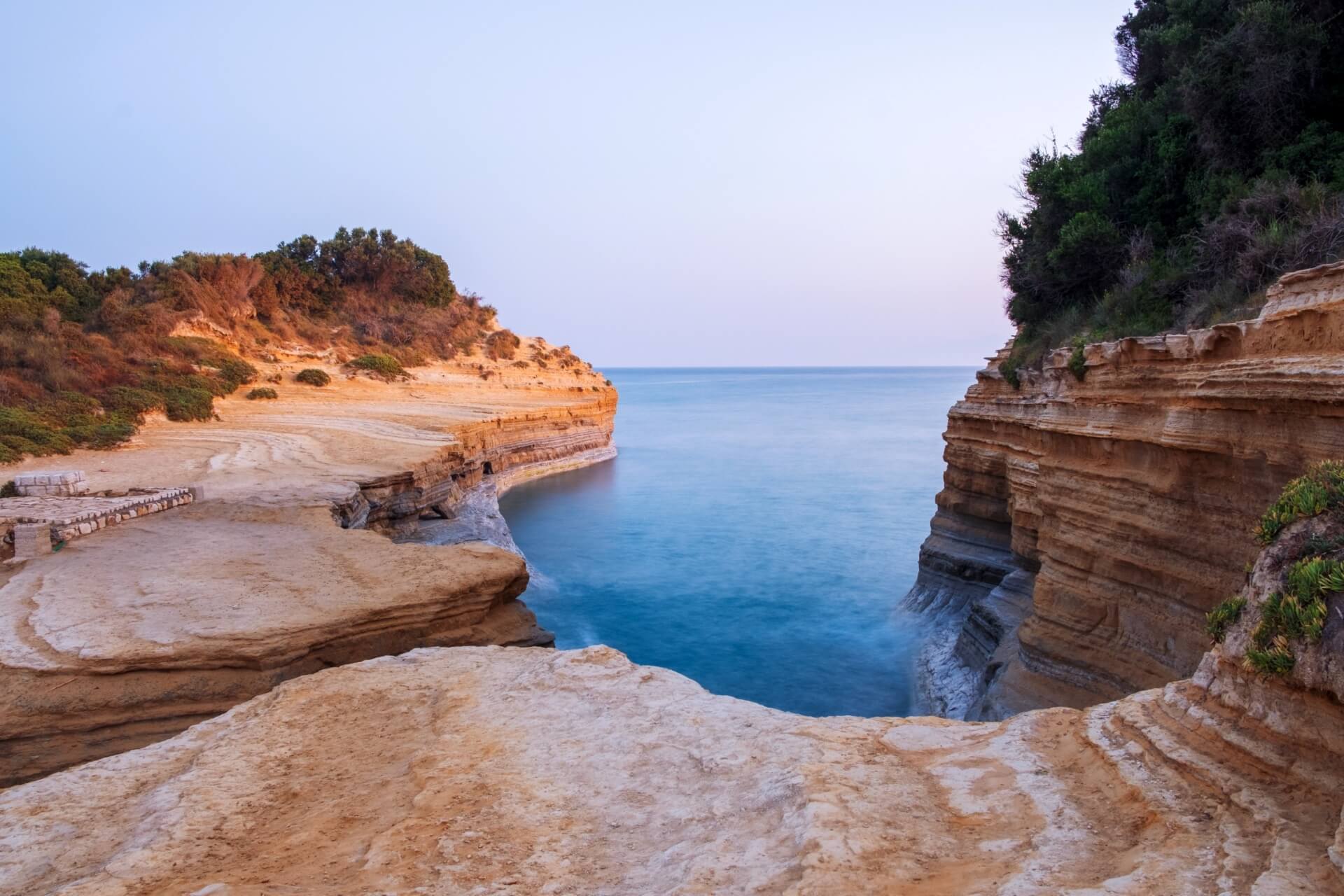
The small town of Sidari is famous for its beach with a narrow strip of water called the “Canal D’Amour” (Channel of Love). This place is a remarkable natural phenomenon, formed by water eroding a narrow channel (20 meters wide) through the rock over thousands of years. It is an excellent spot for a family holiday: the strip of sea is well protected from the wind, and the water is always warm.
The wonderful beach, surrounded by beautiful landscapes, and the romantic legend of the canal’s origin make it a magical place for many tourists. The legend, telling of two lovers turned into two rocks by angry gods, has spawned traditions that visitors to the “Canal D’Amour” invariably follow.
If people want to stay together forever, they must swim through the channel together. If someone wants to find their love, their second half, they should swim under the rock arch and say aloud the name of the person they wish to see beside them in life.
Here, you can explore mysterious caves and tunnels, see beautiful landscapes, and spend unforgettable days. To get to the “Canal D’Amour,” you need to cross Sidari, heading towards the famous Peroulades beach. To the right of it lies the romantic beach (a special sign points to it).
Sidari Beach
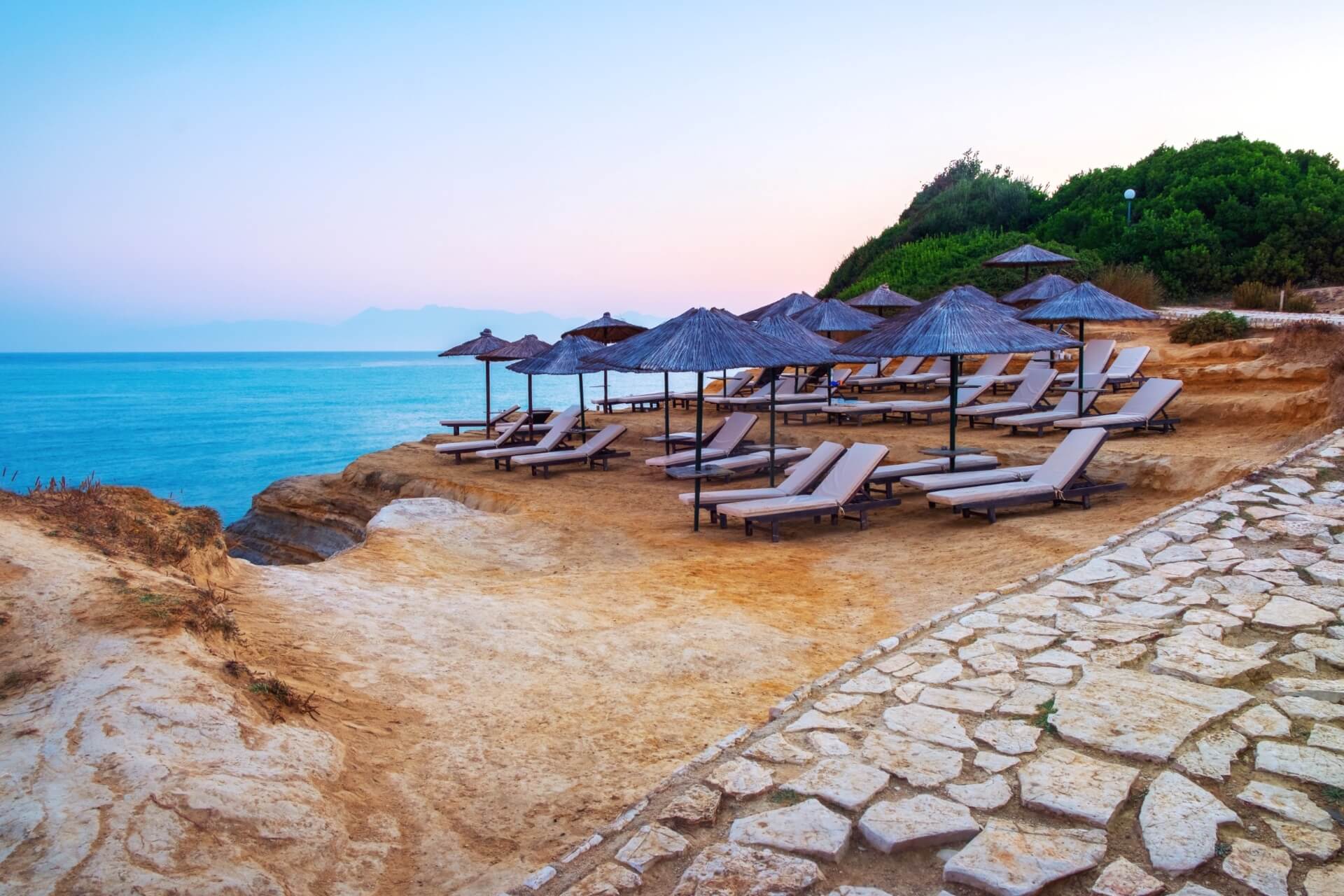
Despite being a small town, Sidari is famous for its beaches. In addition to the “Canal D’Amour” and Peroulades, the namesake beach is also very popular. Essentially, this is a whole resort-beach area, combining several picturesque villages connected by beaches.
The longest of them is Sidari Beach, located near the old fishing harbor (36 km from the center of Sidari). The beach is famous for its wide sandy strip extending into the sea, like a bay where there is sand instead of water. This attracts a large number of holidaymakers with children, who can run around on the soft sand, play and sunbathe safely: there are no rocks here.
Enchanting views open from all sides: the blue of the sea, the whiteness of the clouds, and the yellowing cliffs in the distance create wonderful landscapes. The well-developed infrastructure allows everyone to actively rest. Here, you can rent paragliders, quad bikes, motorboats, pedal boats, water skis, and equipment for surfing and diving.
Many cafes, restaurants, and eateries offer delicious, high-quality dishes made from fresh fish, seafood, vegetables, and fruits. Night discos and various entertainment programs attract young people. Nearby, there is another small beach surrounded by high cliffs. It is chosen by experienced swimmers who engage in diving and underwater photography.
Angelokastro Fortress
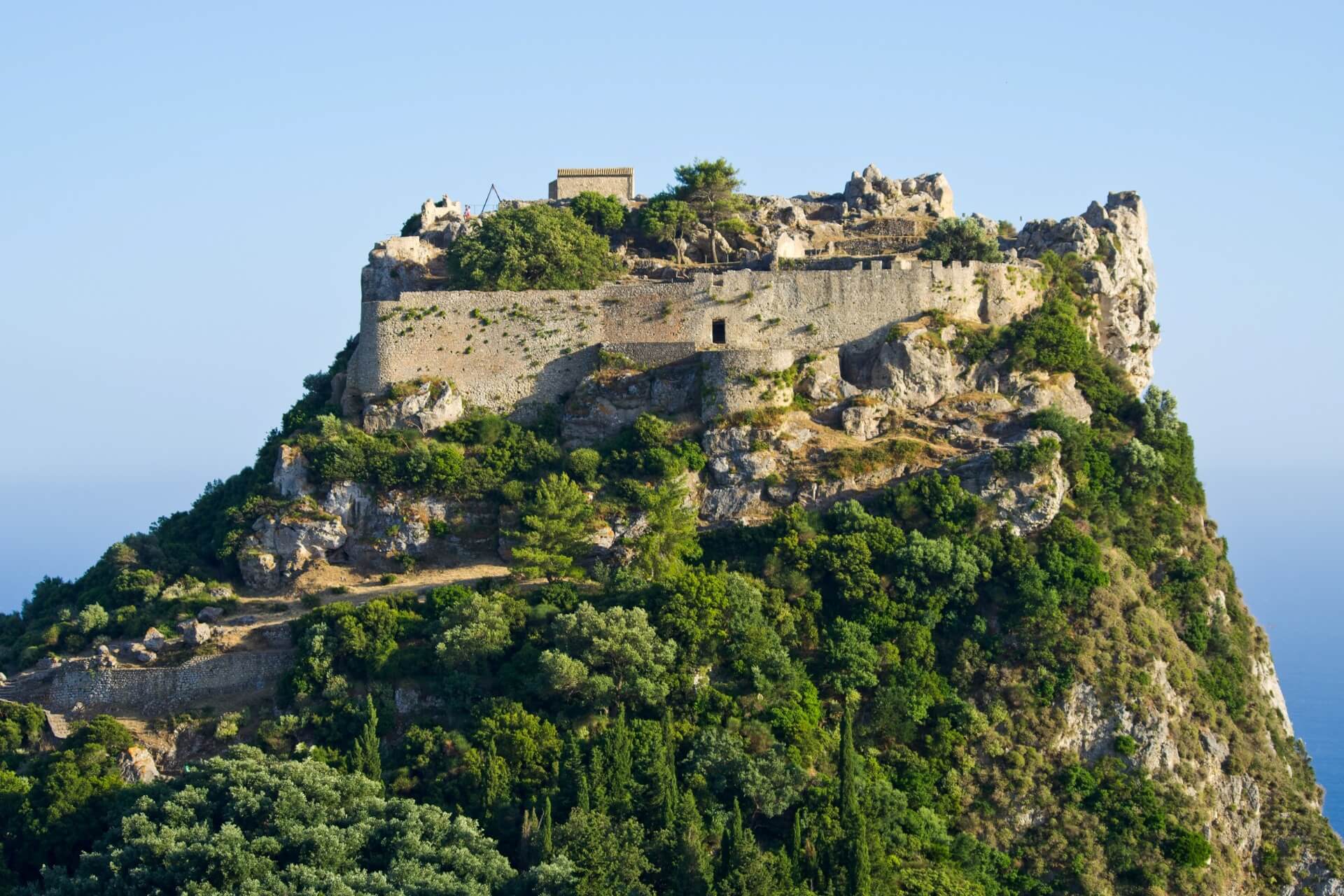
This ancient Byzantine fortress is located on the top of the northeastern coastline of the island, near Paleokastritsa. The powerful fortification was built by Emperor Michael II Komnenos in the early 13th century and named after his father, Angelos. Today, it is also known as the fortress of Archangel Michael, because a small church dedicated to the archangel stands nearby.
The fortress had significant strategic importance as the westernmost outpost of the Byzantine Empire, which included the city of Kerkyra (until 1267). Archaeological excavations in 1997, particularly two Christian tombs, testify to the settlement of these places in the early Byzantine period of the 5th-7th centuries AD.
After the fortress’s construction was completed, the ancient Monastery of Paleokastro was moved to a safer location on the island of Mykonos, where it remains to this day. Despite its impregnability, the fortress was captured in 1267 by the Angevin tribes, as known from an ancient manuscript – the oldest written monument of Angelokastro’s history.
The Angevins were expelled, but in 1386, the fortress was besieged by the forces of the powerful Venetian Republic, and it came under their control. Many times afterward, Genoese and Turkish troops tried to conquer the legendary fortress, but it did not surrender, nor did the entire island of Corfu. Today, the carefully restored fortress structures serve as an open-air museum, where you can visit the Church of Archangel Michael – a true monument of antiquity.
The Chapel of Saint Kyriaki, with its well-preserved unique 18th-century frescoes, is a fascinating sight. Here, the images of those who built the stone structures at the cost of great labor vividly come to life, and the history of past centuries passes before your eyes.

